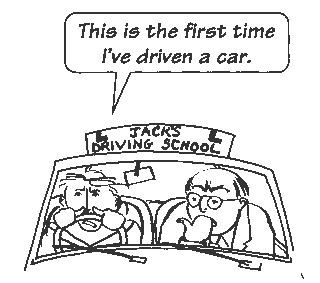PERFECT TENSE
The present perfect tense is a rather important tense in English, but if gives speakers of some languages a difficult. Thats because it uses concepts or ideas that do not exist in those languages. In fact, the structure of the present perfect tense is very simple. The problems come with the use of the tense. In addition, there are some differences in usage between and American English.
Subject + auxiliary verb have + main verb past participle
Here are some examples of the present perfect tense.
Subject Auxiliary verb Main verb
+ I Have Seen ET
+ You Have Eaten Mine
- She Have Not Been To Rome
- We Have Not Played Football
? Have You Finished
? Have They Done It ?
Contractions with the present perfect tense
When we use the present perfect tense in speaking we usually contract the subject and auxiliary verb. We also sometime do this when we write.
I have I’ve
You have You’ve
He has
She has
It has
Jhon has
The car has He’s
She’s
It’s
Jhon’s
The car’s
We have We’ve
They have They’ve
Here are some examples :
- I’ve finished my work
- Jhon’s seen ET
- They’ve gone home
For & Since With Present Perfect Tense
We often for and since with the present perfect tense
- We use for to talk about a period of time – 5 minutes, 2 week, 5 years.
- We use since to talk about a point in past time – 9 o’clock, 1 st January, Monday.
For Since
A period of time A point in past time
X ……..
20 minutes 6.15 pm
Three day Monday
6 months January
4 years 1994
2 centuries 1800
A long time I left school
Ever The beginning of time
Etc Etc
Here are some examples
- I have been here for 20 minutes
- T have been here since a o’clock
- Jhon hasn’t called for 6 month
- Jhon hasn’t called since February
- He has worked in New York for a long here
- He has worked in New York since he left school











